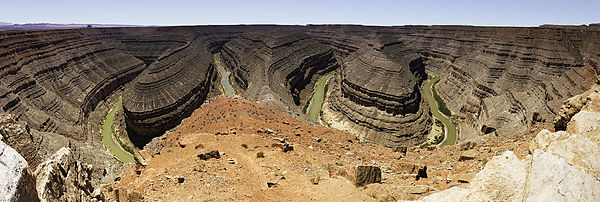- Aug 30, 2008
- 6,877
- 3,137
- Country
- Australia
- Gender
- Male
- Faith
- Christian
- Marital Status
- Married
I was on another thread and we were discussing the fossil record, and I could see that there was a pattern to the depositing of fossils. That less well developed animals were found at the bottom of the strata, and that as time progressed the animals became better developed. Now for an evolutionary perspective, this would be said to be the gradual evolutionary change between species. However being a strong believer in creation I could not accept blindly that this was evidence for evolution. So I had a bit of a think about it. And this is what I feel can explain this, but I have put it here so we can talk about it.
I believe in a global flood, I believe God as the bible said flooded the whole earth. Now what would we expect to see if this happened?
We would see water slowly rising over the earth and drowning animals and man as it went. I would imagine as flood waters generally are they would be filled with sediment. So what as a Creationist (but not a scientist) would I expect to see. I believe the following:
At the lower levels you would have a lot of marine life and sediment from the oceans as they begin to spew out from the seas. Then this is where the strata come into it. As the waters rise and become deeper the following would occur. At the very bottom you would expect to find large animals that either could not swim, or had trouble supporting their weight (such as dinosaurs), which we do see. Now we know that all modern animals can swim. So we would expect to see the swimmers at the top of the strata, which we do see. Humans are more capable climbers that most animals so would be able to scale cliffs, and other out crops, accounting for their late arrival in the strata. Back to the animals however, which could still swim. We would see the young, babies, and youth, cease to swim before the adults, so be deposited first before the adults, we do see this small primates are even found with dinosaurs. This would give the impression to an evolutionary observer of the gradual increase in size of primates, and other animals. Why the younger smaller ones are found lower down (earlier in the drowning process), than the youth, or adults.
I believe in a global flood, I believe God as the bible said flooded the whole earth. Now what would we expect to see if this happened?
We would see water slowly rising over the earth and drowning animals and man as it went. I would imagine as flood waters generally are they would be filled with sediment. So what as a Creationist (but not a scientist) would I expect to see. I believe the following:
At the lower levels you would have a lot of marine life and sediment from the oceans as they begin to spew out from the seas. Then this is where the strata come into it. As the waters rise and become deeper the following would occur. At the very bottom you would expect to find large animals that either could not swim, or had trouble supporting their weight (such as dinosaurs), which we do see. Now we know that all modern animals can swim. So we would expect to see the swimmers at the top of the strata, which we do see. Humans are more capable climbers that most animals so would be able to scale cliffs, and other out crops, accounting for their late arrival in the strata. Back to the animals however, which could still swim. We would see the young, babies, and youth, cease to swim before the adults, so be deposited first before the adults, we do see this small primates are even found with dinosaurs. This would give the impression to an evolutionary observer of the gradual increase in size of primates, and other animals. Why the younger smaller ones are found lower down (earlier in the drowning process), than the youth, or adults.


